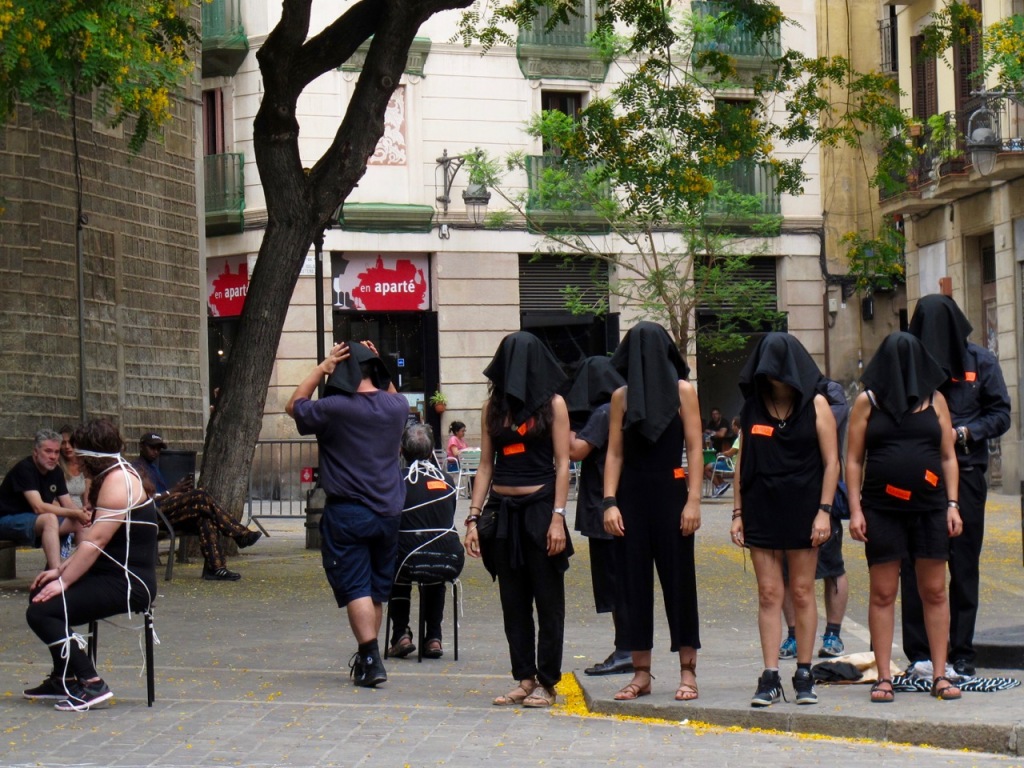One reason why this blog (and the book it supports) is called ‘A Restless Art’ is to escape the trap of what to call the artistic practice I’m writing about. There is a huge range of terms: participatory art, socially engaged art, relation practice, geologic aesthetics, community art, interactive art, activist art… the list goes on. I’m trying to untangle some of that in the first part of the book, which I’ve now begun. My interest is less in the shifting theories behind these labels than in why artists and critics have felt the need to keep defining their differences. That says a lot about the place of the work within and beyond the art world.
However, since the book is about ‘participatory and community art’, it is important to explain what I understand by those terms, even if others have different interpretations. I’ve written before about how many British artists stopped describing their work as community art during the 1990s and the ideological implications of that choice. (You can read that paper here.) But the term ‘participatory art’ has a much wider meaning in the art world. In an article on participatory art in the Encyclopaedia of Aesthetics (OUP 2014), Tom Finkelpearl relates the term to art
“created through the participation of people in addition to the artist or art collective. In participatory art people referred to as citizens, regular folks, community members, or non-artists interact with professional artists to create the works.”
This definition, which is clear enough as far as it goes, describes a very large landscape indeed, much of it beyond the scope of this project or my interest. So it is necessary to consider the relationship between this vast field and the work that I – still – describe as community art. That seems particularly important since the Encyclopaedia of Aesthetics has nothing to say about community art, although many artists have been describing their work in that way since the 1960s.

So, in this book, I use both participatory art and community art, though not to mean the same thing.
- By participatory art, I mean the whole field of collaborative arts work, from Gormley’s Field to Streetwise Opera, where artists involve the public in making art.
- By community art I mean a radical rights-based approach to participation in art characterised by a critical social engagement.

Participatory art is a vast and varied field of artistic practice of which community art is only one part. But it is important to focus on community art because – as well as being a practice in its own right – it has functioned as an avant-garde to the field as a whole. Community art is exploratory, innovative, radical and challenging. At its best, it’s the R&D section of participatory art. As such, its work has not always been good or successful. Some of its ideas have been dead ends or embarrassing failures. But even these are interesting and worth learning from. The ground-breaking work of community art has tested ideas and practices that have since become established across and beyond the field of participatory art.


Responses
I have had similar challenges – perhaps we should join forces!
LikeLike
As it happens I was listening to ‘Let’s Work Together’ (Canned Heat) as I walked to the office… and thinking that one of the key values of community arts is that we are stronger together. I read your paper a few months ago (before we talked) and found a lot there to agree with. I hope that this book will give me the space to outline some of these ideas more fully than it’s possible to do in a blog post or a conference paper.
LikeLike
Hi Francois,
“My interest is less in the shifting theories behind these labels than in why artists and critics have felt the need to keep defining their differences.”
Would you agree that the many names given to community art may have arisen from changing government prolixity and cultural policies and also hints at motivational conflict within the art world, in the understanding of attempts by artists to become socially engaged through various forms of relational or collaborative practice? I’ve been researching this briefly for me old PhD, which I’m struggling through at the moment and came across these explanations while reading Badham, M. (2010) and Charnley, K. (2011). I’d be interested in your thoughts.
These blogs of yours are like a light in the tunnel btw as I try coming to grips with chewing the large piece I’ve bitten off (the Phd).
Good luck with your book. Look forward to reading it.
J
LikeLike
Thanks for your encouraging words, James. I don’t think government policy has much to do with it (except as I’ve written elsewhere, in the change from community art to participatory art), but disagreement in the art world certainly does. In what I’ve written for the book so far, I’ve suggested three big reasons for the proliferation of names – it’s not a ‘form’, it’s emergent and it’s contested. But I also don’t think in itself that’s a problem. Language is a means for developing our understanding and deciding what we believe – hence the shifting language about issues like disability, gender or ethnicity. Our ideas about these things are in flux and language is how we try to negotiate that shifting world.
LikeLiked by 1 person